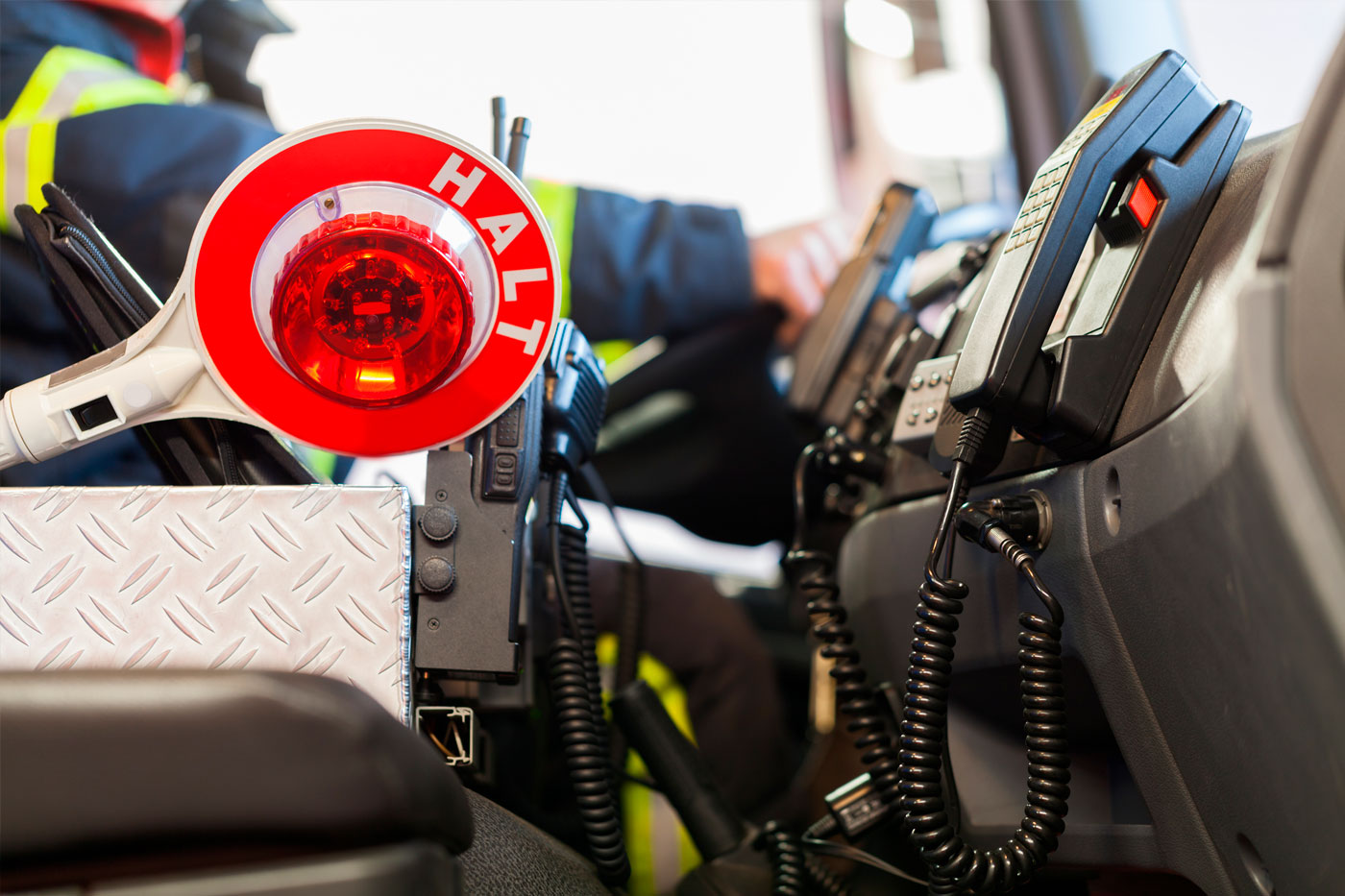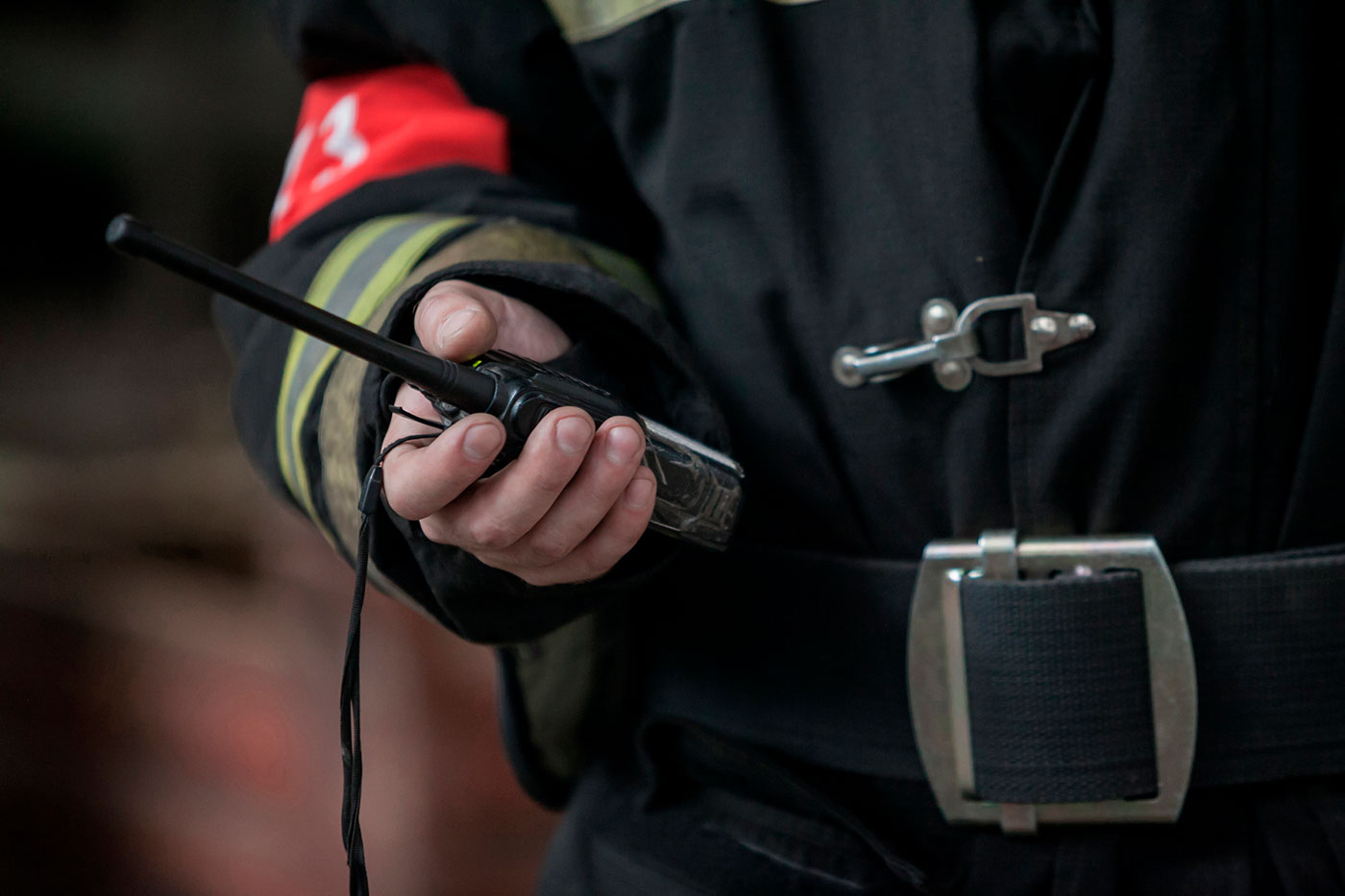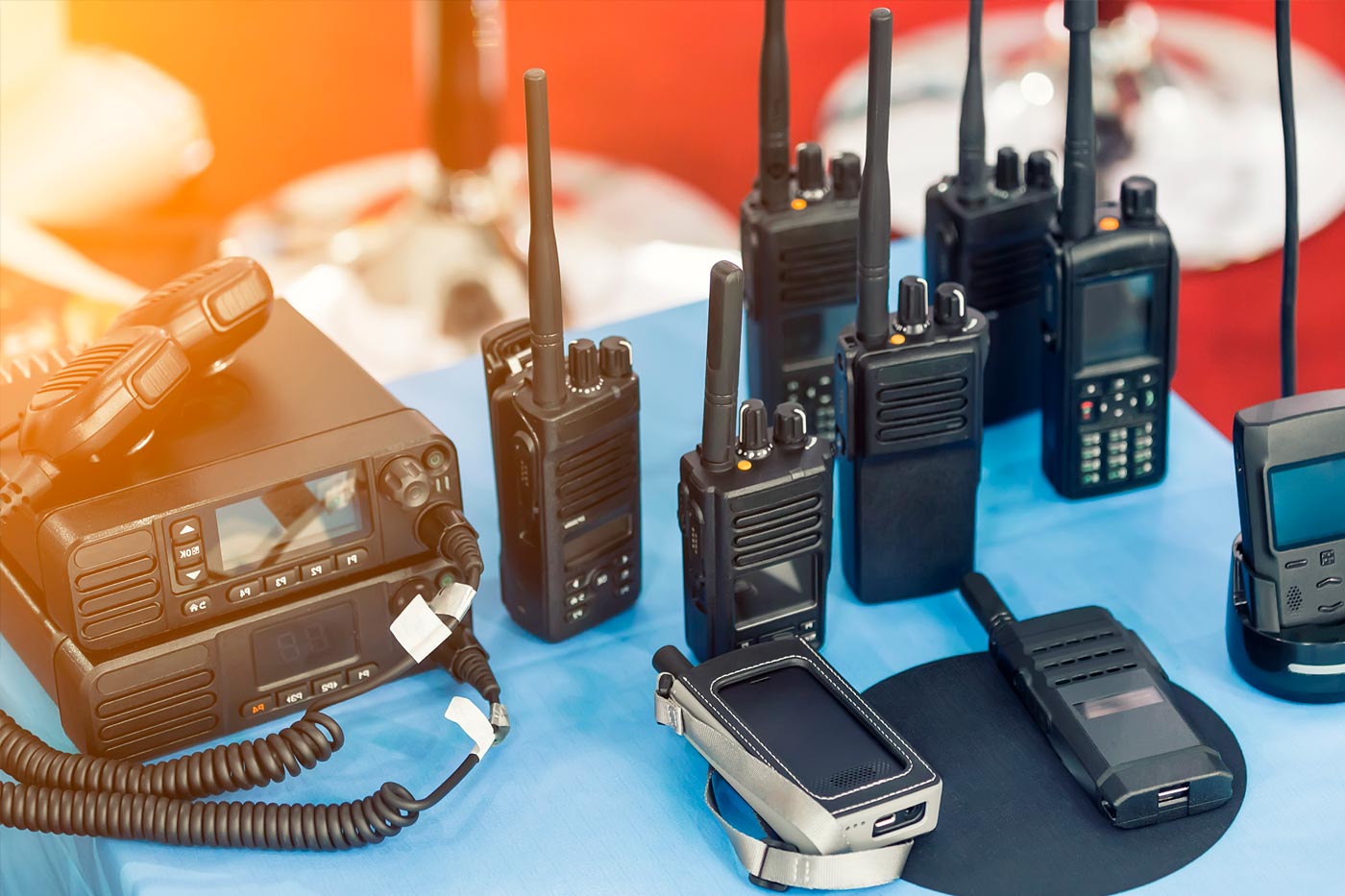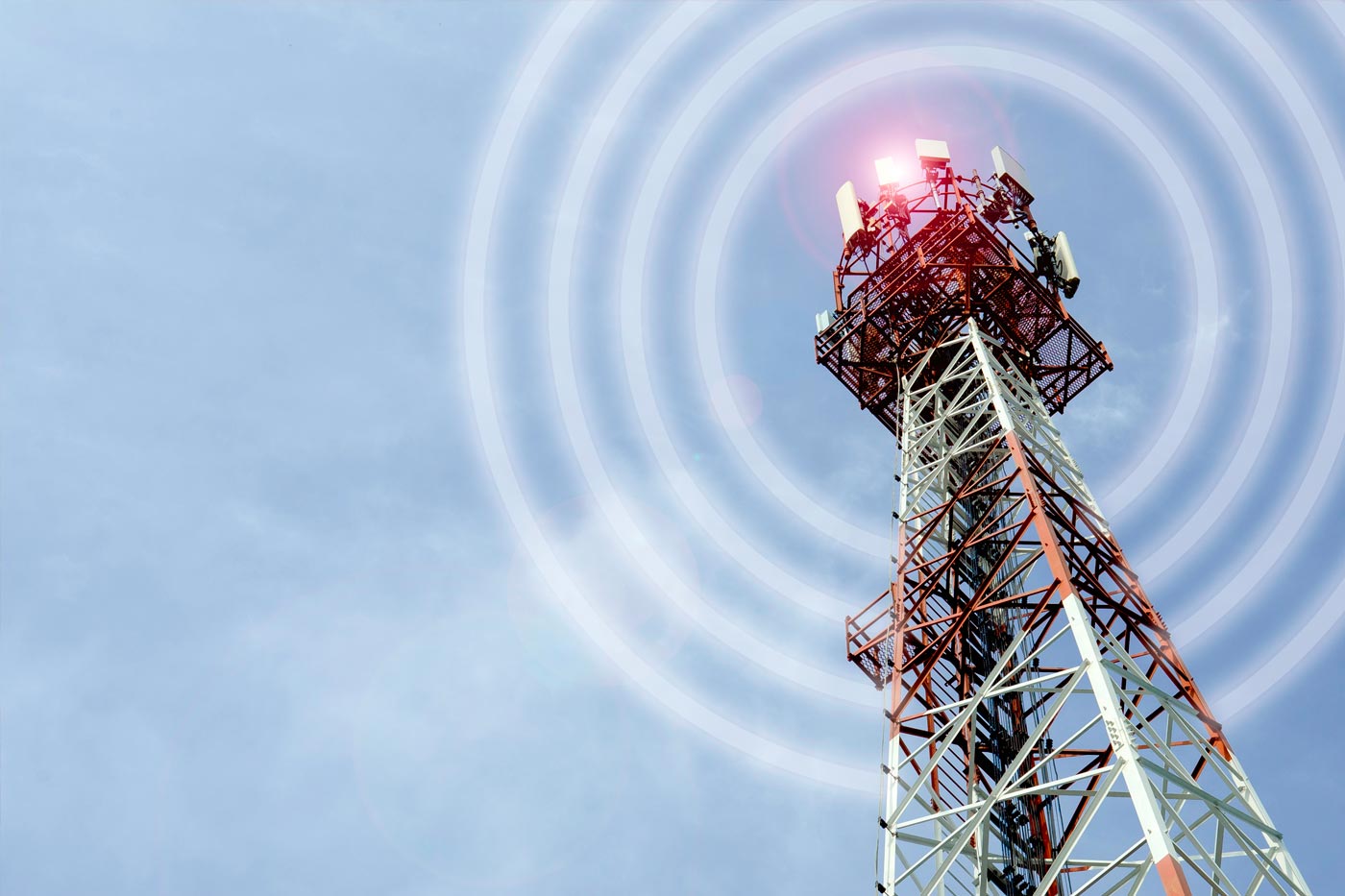
Land Mobile Radios
LMR, or Land Mobile System, is a terrestrially-based professional push to talk communications system, which is widely used by public safety organizations (for instance, police, firefighters and others) with the aim of supporting the communication in critical situations. This system is wireless, it works without any cables. LMR systems are used worldwide in various spheres from industrial to security and even military.
If we speak about the elements, which comprise LMR, they are: handheld portable radios, vehicle mounted mobile radios, fixed base stations and repeaters, network infrastructure.
The use of LMR started in the 1930s with the purpose of supporting the mission-critical voice communications. At that time, LMR systems were analogue and were able to transmit only the voice. Consequently, there was a demand in more advanced system with enhanced functions, which would be capable of supporting both voice and data. Besides, many users have found «trunked» systems more convenient for the use in comparison with «conventional» ones. Conventional systems do not allow the members of the group to connect to the channel of an ascertained user until he finishes his call. When such a call is made, the user has to select a specific channel. If we speak about trunked system, it is more accommodative to use as it selects the channel automatically choosing from the pool of channels available. Other users can simultaneously use the remaining channels for making a call. The advantages of trunked systems are numerous (increased capacity and interoperability, reduced congestion, more efficient use of channels for communication), yet some disadvantages are to be spoken of. For instance, these systems are more complex and difficult to deal with. Likewise, better infrastructure is required for them to be provided. All these requirements lead to the enhancement in price.
If we compare LMR technologies with LTE, the LTE enables more high-speed data communications, that are not supported by LMR. In particular, LTE enables to stream video or to transfer large amounts of data quickly. These advantages make LTE more attractive for Public Safety sector.
For the proper performance of mission-critical public safety communication and supporting the public safety, LMR and LTE are to be properly installed and maintained.
Standards of LMR Radio
The standards for the digital radio communications are set up and published by APCO (The Association of Public Safety Communications Officials). In 1989 it published the Project 25 (P25), which included standards for the design and manufacture of interoperable digital two-way wireless communications products, which are made for the use of public safety officials.
Project 25 works with two phrases not correlating with each other.
The standard operates with certain parameters:
• Interoperability among agencies/ vendors
• Spectral efficiency
• Compatible with existing systems
• Integrated voice and data services
• Conventional, trunked and secure communications
Phrase 1 specifications:
• 12.5 kHz channel bandwidth
• Frequency Domain Multiple Access (FDMA)
• C4FM and CQPSK modulation
Phrase 2 specifications:
• 12.5 kHz channel bandwidth
• 2-slot Time Division Multiple Access (TDMA)
• Harmonized Continuous Phase Modulation (H-CPM) modulation for subscribers
• Harmonized Differential Quadrature Phase Shift Keying (H-DQPSK) sites modulation
TETRA
TETRA (Terrestrial Trunked Radio) is a standard, which was developed by the ETSI (European Telecommunications Standards Institute) and published for the first time in 1995. This standard is widely used by the governmental organizations (emergency services, fire departments, paramedics and etc.) and likewise by private companies in various spheres which differ from transport to the companies-suppliers of energy.
Specifications of TETRA:
- 25 kHz channel bandwidth
- 4-slot Time Division Multiple Access (TDMA)
- π/4 Differential Quadrature Phase Shift Keying (DQPSK) modulation
DMR
DMR is digital mobile radio standard, which was developed in 2005 by ETSI (European Telecommunications Standard Institute). This standard enables to operate with the existing 12.5kZh channel. It is essential, as this channel is used worldwide in licensed land mobile frequency bands. The main advantage of PMR is that it can serve all of the categories. Moreover, this system can easily be used in licensed trunked, licensed conventional and unlicensed mode (from 446.1 to 446.2 MHz band). ETSI has established this band and utilized 6.25 kHz channel FDMA (Frequency Division Multiple Access). In comparison with NXDN and dPMR, DMR is more convenient due to the fact that it requires lower infrastructure costs.
Specifications of DMR:
• 12.5 kHz channel bandwidth
• 2-slot Time Division Multiple Access (TDMA)
• Four Frequency Shift Keying (4-FSK) modulation
dPMR
dPMR (Digital Private Mobile Radio) radio was invented according to the reference TS 102 658. We cannot but mention its advantages: comparably lower price, enhanced spectral efficiency for congested areas, better range due to the 6.25kHz spacing.
Specifications of dPMR:
• 6.25 kHz channel bandwidth
• Frequency Domain Multiple Access (FDMA)
• Four Frequency Shift Keying (4-FSK) modulation
NXDN
NXDN is defined as a Next Generation Digital Narrowband. It was developed conjointly by Icom Inc. and Kenwood with the aim of appropriateness to the efficiency of 6.25 kHz channel. NXDN was invented for the use of commercial Private LMR and public safety communications systems. NXDN is built on the ETSI dPMR standard, however, NXDN is non-compliant with the purpose of avoidance of various IP issues, which relate to the dPMR standard.
The advantages of NDXN:
- low cost of ownership
- compossibility with the FCC demands for the equivalence with 6.25 kHz channel
- backwards compossibility with analog and LTR (Logic Trunked Radio) networks
Speaking about the inventors, Icom company has released IDAS™ and Kenwood- NEXTEDGE®, which work both in conventional and trunked options.
In-building Coverage Mapping
Communications are to be provided in multifarious spheres by means of the use of in-building wireless communications. These spheres are vibrant: law enforcement activities, emergency medical treatment, providing communications whilst disasters and etc. The appropriate and correctly configured communications are the inalienable part of work of professionals and organizations.
With the development of technologies and the extension of the requirements for communication equipment, the traditional means, as analogue service, are not able to comply with up-to-date standards. Hence, more sophisticated services are to be developed. These changes lead to the redefinition of PMR, which is based on digital technology.
An integrated test set can be determined as the inalienable part of mobile radio measurements and it is a vital task to determine how these measurements are to be performed. RH (Radio-frequency) system is to work properly in various environmental conditions, which can occur during field usage. An appropriate test method must be used in order to provide an opportunity to carry out fast and accurate control of radio system.
Tetra (The Terrestrial Trunked Radio) is considered as a professional mobile radio standart (PRM), provided in more than 100 countries. It is widely used by the governmental organizations and likewise by private companies in various spheres which differ from transport to the companies-suppliers of energy. Radio of such a type is to correspond with established requirements, which include unlimited availability of the system, secure guarantees, stable wireless connection.



